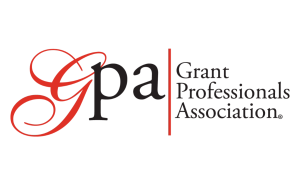Like previous Office of Management and Budget (OMB) Compliance Supplements, the 2020 supplement that replaces the 2019 version is gigantic. It’s a 1,552-page tome. This guidance document is effective upon publication and applies to audits after June 30, 2019.
The official comment period on the supplement is only for convenience and future use since guidance is not the same as a rule and grants are not subject to the Administrative Procedures Act.
Broadly speaking, the 2020 Compliance Supplement continues implementation of the President’s management agenda related to “Results-Oriented Accountability for Grants. “The idea is to shift the grants management paradigm of federal agencies to a balanced approach that incorporates both compliance and measurable program and project goals that will produce data to improve the outcomes of grant-funded programs,” according to Henry Flood, is senior advisor for grant administration of The Grantsmanship Center in Los Angeles, Calif.
To achieve this improved balance, the 2020 Supplement cuts the compliance areas for audit review in half, reducing them from 12 to 6. “But don’t think this means a less burdensome regulatory environment for recipients of federal grants,” said Flood. “It does not. How can it, since the Supplement is primarily for auditors and is over 1,500 pages long? Even though the compliance areas that auditors must review have been reduced, the other areas will not disappear. Agency officials have full authority to enforce or not enforce those other areas as they see fit.”
Flood opines that the focus on performance and results is understandable. But he warns that compliance burdens associated with that focus will increase, as will the risk of losing grant funding if organizations do not achieve the expected outcomes, or the if the federal agency finds results are unsatisfactory even if the grantee has diligently implemented the agreed upon program plan.
“The new Compliance Supplement eliminates the historical give and take in the grantor-grantee relationship,” said Flood. “More than 40 years ago, Richard B. Cappalli, in his treatise Rights and Remedies Under Federal Grants (1979), wisely observed that the world of federal grants is one of ‘grantor kings and grantee serfs.’ It is discouraging but true in many ways. Grant recipients are now contractors in a grant-agreement clothing.”
Flood advises looking at Part 8, Appendix V of the Supplement to see what has changed between the 2019 and 2020 versions. This is the first Compliance Supplement issued in the COVID-19 era and pandemic-related changes can be found throughout the guidance. Cost reimbursement contracts in grants above the simplified acquisition threshold ($250,000) will be subject to the requirements of the Federal Acquisition Regulation (FAR) Part 48, but only high-dollar grant recipients will be affected.
Block grants and some specific grant programs are not subject to the A-102 Common Rule and parts of 2 CFR 200 (see Part 8, Appendix I). There are also changes in the “Yes” and “No” audit coverages in Part 4 for all Federal Programs.
If you’re responsible for grants management at your organization, you’ll want to read through the 2020 Compliance Supplement. It’s part of the never-ending job of keeping current on federal rules, regulations, and guidance related to grants. ©Copyright 2020, The Grantsmanship Center








